Table of Contents
When I’m viewing Performance reports in Google Search Console, I find it frustrating that I can’t see the landing page URLs for my search queries. Doesn’t it help to know which page is ranking for a given keyword? Yes, yes it does.
Thankfully, you can easily fix this problem using Google Data Studio. Check it out:
Before (Keywords, but no Landing Page URLs)
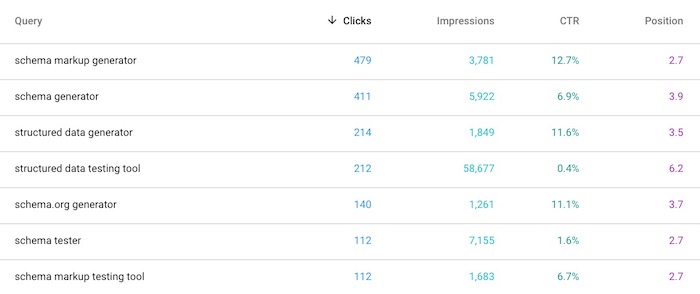
After (Keywords, with Landing Page URLs)

Here’s what we’ll cover in this article:
- How to use Google Data Studio to see landing page URLs for each keyword
- How to use Data Studio’s “blend data” feature to stitch together keyword, landing page URL, and ranking position data
How to use Google Data Studio to see landing page URLs for each keyword
1. Create a new Google Data Studio report. Add Google Search Console as a data source and select URL Impression.
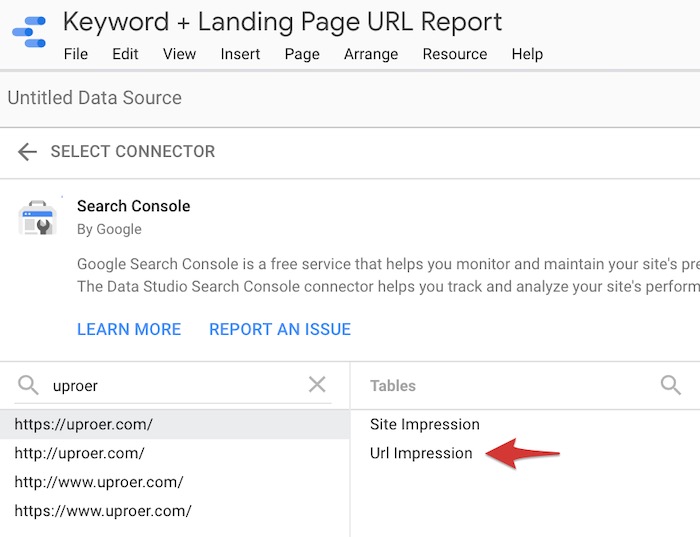

2. Create a table and select your Google Search Console data source. Set up your table’s dimensions and metrics as shown in the screenshot below:
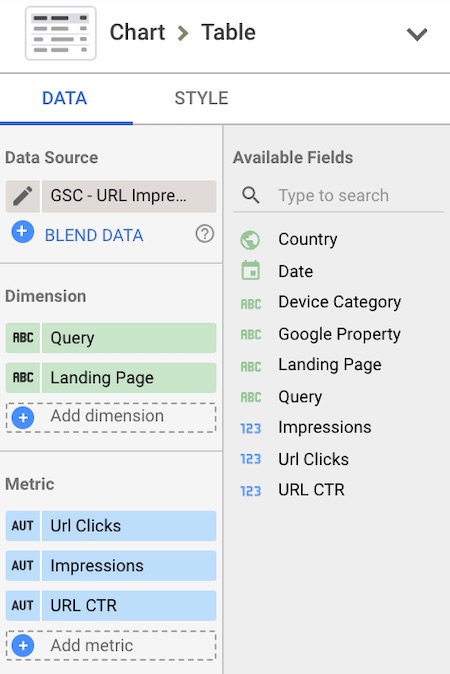
3. View your table and you’ll now be able to see the landing page URL for each keyword.
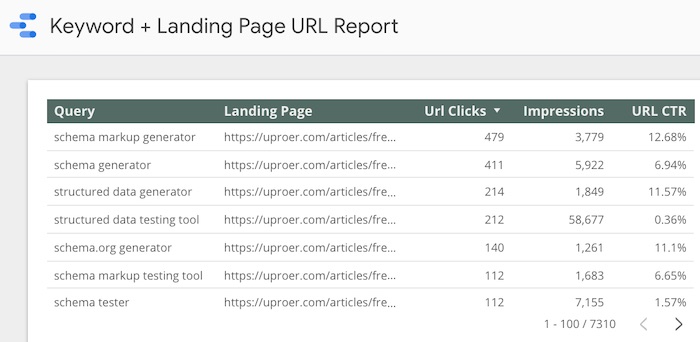

But how come you can’t add a column for Average Position? Search Console doesn’t calculate keyword ranking positions at the URL level, but rather at the site level. Hence, it’s not available in the URL Impression report. So, you have two options:
- You could export and combine your data from Google Search Console and Google Data Studio into one spreadsheet using vlookups, or;
- You can use Google Data Studio’s “blend data” feature to add a column to your table for Average Position (I’ll show you how to do this next)
Use Data Studio’s blend data feature to add the Average Position to your table
1. In the same Data Studio report, add Google Search Console’s Site Impression report. You should now have both data sources added.
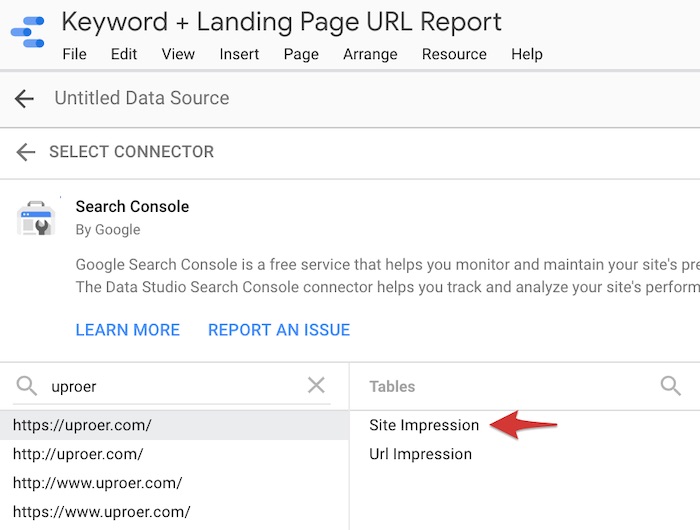

2. Using the same table your previously created, click Blend Data.
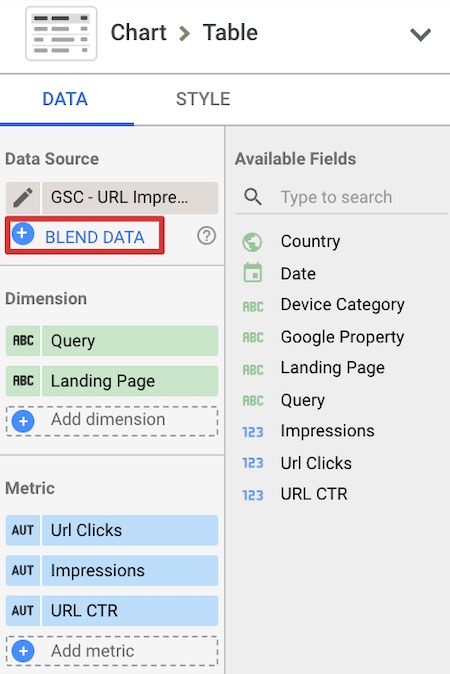

3. Click “Add Another Data Source” and select your GSC Site Impression data.
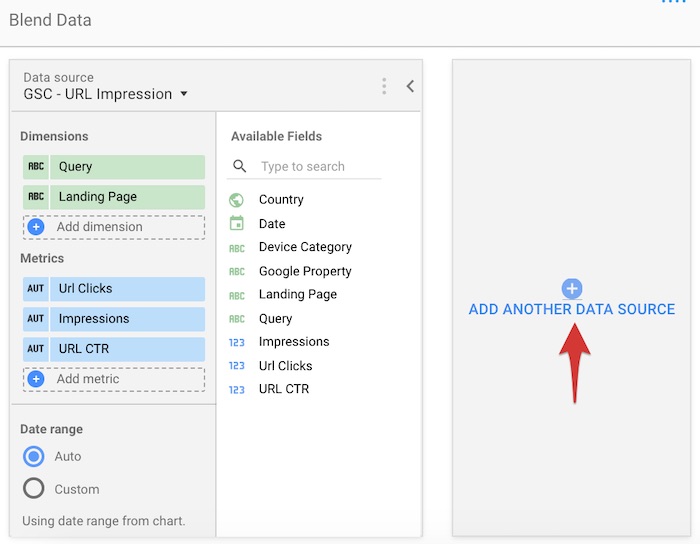

4. Set up your data source as shown in the screenshot below:
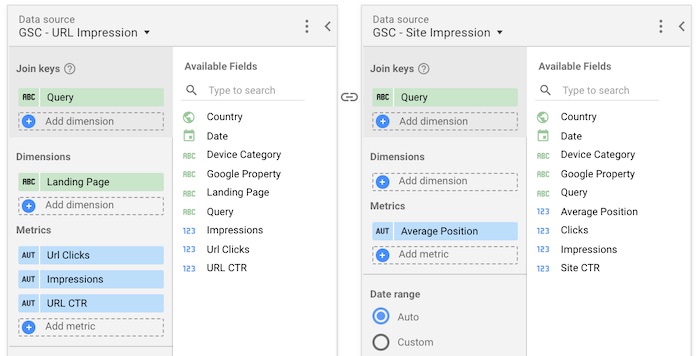

5. You can now add a column for Average Position to your table.
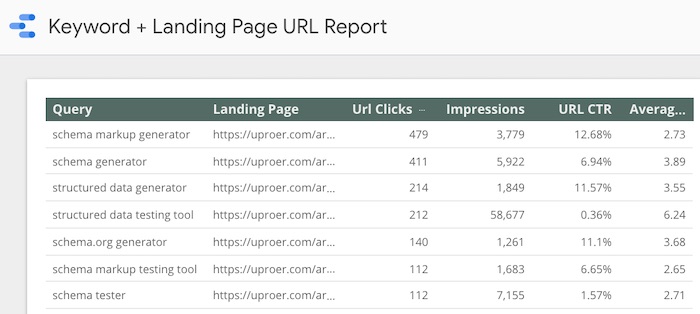

There it is, you've got keyword, landing page URL and average position all in one table.

